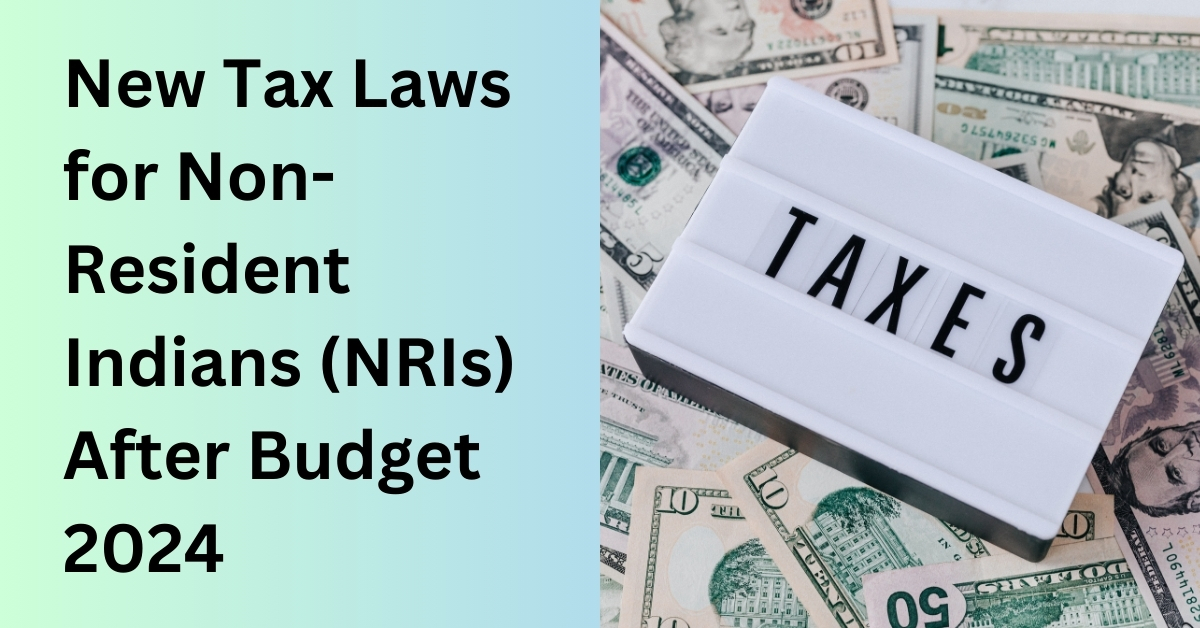New Tax Laws for Non-Resident Indians (NRIs) After Budget 2024
The Union Budget 2024 brought significant changes to the Indian tax landscape, particularly impacting Non-Resident Indians (NRIs). Below is an overview of the key developments introduced in this budget, focusing on long-term capital gains tax, new provisions, and comparisons between the old and new tax regimes.
Key Changes in Budget 2024
1. Standard Deduction
In a move aimed at simplifying the tax process, the standard deduction under the new tax regime has been increased from ₹50,000 to ₹75,000. While this change is beneficial for resident taxpayers, it’s important to note that this deduction does not apply to NRIs. NRIs are thus required to carefully evaluate their tax liabilities in the context of these updated rules.
2. Family Pension Deduction
For family pensioners, the deduction limit has been raised from ₹15,000 to ₹25,000. This change helps to alleviate the tax burden on pensioners, ensuring they have more disposable income post-tax deductions. Although this change specifically benefits resident Indians, it is an essential factor for NRIs to consider if they have family members receiving pensions in India.
3. NPS Contribution Deduction
The deduction available for contributions made by employers to the National Pension System (NPS) has seen a significant increase, from 10% to 14%. This move is designed to encourage greater participation in the NPS, bolstering retirement savings. For NRIs employed by companies with NPS provisions, this change could positively affect their retirement planning.
Comparison of Old and New Tax Regimes for NRIs
Old Tax Regime for NRIs
Under the old tax regime, Non-Resident Indians (NRIs) can take advantage of various deductions and exemptions. The tax rates are structured as follows:
- For income up to ₹2,50,000, there is no tax.
- Income between ₹2,50,001 and ₹5,00,000 is taxed at 5%.
- For income between ₹5,00,001 and ₹10,00,000, the tax rate is 20%, with a base tax of ₹12,500.
- Income exceeding ₹10,00,000 is taxed at 30%, with a base tax of ₹1,12,500.
This regime is particularly beneficial for NRIs who have made investments in tax-saving instruments or have other qualifying deductions, as these can significantly reduce their taxable income.
New Tax Regime for NRIs
The new tax regime offers a more simplified approach with lower tax rates but does not allow for most deductions and exemptions. Under this regime:
- There is no tax for income up to ₹3,00,000.
- Income between ₹3,00,001 and ₹6,00,000 is taxed at 5%.
- Income from ₹6,00,001 to ₹9,00,000 is subject to a 10% tax rate.
- For income between ₹9,00,001 and ₹12,00,000, the tax rate is 15%.
- Income from ₹12,00,001 to ₹15,00,000 is taxed at 20%.
- Income exceeding ₹15,00,000 is taxed at 30%.
This regime is designed for NRIs who prefer a straightforward tax calculation without the need to account for numerous deductions and exemptions. However, NRIS need to analyze their financial situation thoroughly before choosing this regime.
Conclusion
The Union Budget 2024 has introduced pivotal changes that NRIs need to consider when planning their tax liabilities. The decision between the old and new tax regimes should be based on a careful evaluation of personal financial circumstances and the potential benefits of available deductions. Consulting with an NRI tax consultant is recommended to navigate these changes effectively and optimize tax strategies accordingly.
For advice on the taxation policies affecting you, you can contact office@primewealth.co.in




